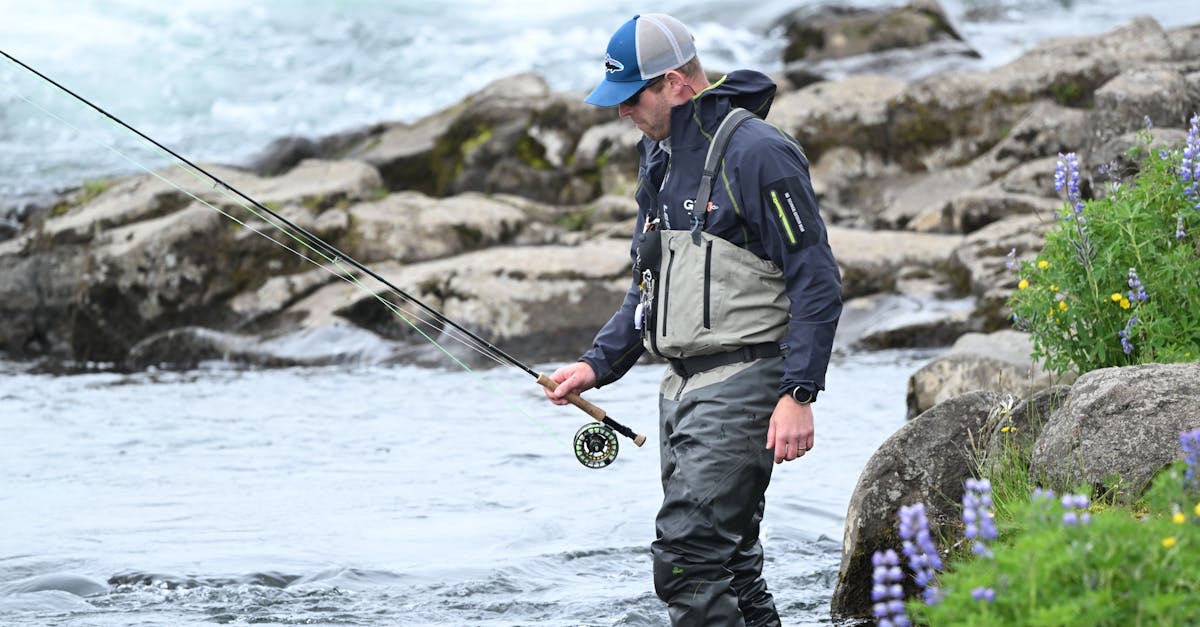
Table Of Contents
Testing the Repaired Rod
After performing the necessary repairs on a fishing rod, it is crucial to test its functionality before casting your line into the water. Testing the repaired rod allows you to ensure that the necessary fixes have been successful and that the rod is ready to perform as expected. To conduct the test, hold the rod firmly and flex it gently. Pay close attention to any unusual sounds or movements that may indicate further repairs are needed. Additionally, you can simulate a casting motion to check the rod's flexibility and strength. By thoroughly testing the repaired rod, you can prevent any unexpected malfunctions during your fishing excursion and ensure a successful outing.
Furthermore, testing the repaired fishing rod also serves as a validation of the repair techniques used. It provides an opportunity to verify that the repairs have addressed the issues identified during the initial assessment. Whether the repairs involved fixing a broken tip, reinforcing a weakened section, or replacing damaged guides, testing the rod will confirm the effectiveness of the Fishing Rod Repair. This step is essential in guaranteeing your safety while fishing and maximizing the longevity of your fishing equipment.
Ensuring Proper Functionality
Fishing rod repair is a meticulous process that requires attention to detail to ensure proper functionality. After repairing any damaged areas of the rod, it is essential to conduct thorough testing to confirm that the rod is in good working condition. This step involves carefully inspecting the repaired sections for any weak points or signs of instability that could compromise the rod's performance.
Ensuring proper functionality of a repaired fishing rod also includes testing its strength and flexibility to guarantee its effectiveness during fishing activities. By conducting various tests, such as stress tests and flexibility assessments, anglers can ascertain that the repaired rod meets the necessary standards for optimal performance on the water. Additionally, testing the repaired fishing rod provides an opportunity to identify any unforeseen issues and address them promptly to prevent potential malfunctions while fishing.
Applying Protective Coating
Applying a protective coating is a crucial step in the process of fishing rod repair. After the damaged areas have been skillfully mended, it is essential to safeguard the repaired sections from potential future wear and tear. A protective coating acts as a shield, providing an extra layer of defense against corrosion, abrasions, and other environmental factors that could compromise the integrity of the fishing rod. By sealing the mended parts with a durable coating, anglers can enjoy peace of mind knowing that their repaired fishing rod is well-protected and ready for action.
Various types of protective coatings are available for fishing rod repair, ranging from epoxy finishes to specialized sealants. It is important to select a coating that is compatible with the material of the fishing rod and offers the necessary level of protection. Additionally, applying the protective coating with precision and care is key to ensuring its effectiveness in preserving the repaired areas. Proper application techniques, such as even coverage and adequate drying time, will help maximize the longevity of the protective coating and maintain the structural integrity of the repaired fishing rod.
Preserving the Repaired Areas
Preserving the repaired areas of a fishing rod is essential to maintain the longevity of the repair work. After fixing any damages to the rod, it is crucial to take proactive steps to ensure that the repaired sections do not deteriorate further. Applying a protective coating over the mended areas can help safeguard against wear and tear, as well as exposure to harsh elements. By choosing a high-quality protective coating specifically designed for fishing rods, anglers can effectively shield the repairs from potential damage.
Regularly inspecting the repaired areas of the fishing rod is another key aspect of preserving the integrity of the repairs. By routinely checking for any signs of wear or weakness, anglers can catch any potential issues early on and address them promptly. Additionally, keeping the rod clean and dry after each use can prevent corrosion and further damage to the repaired sections. Developing a habit of thorough maintenance will not only extend the lifespan of the fishing rod but also ensure that the repair work holds up well over time. Fishing Rod Repair
Proper Maintenance Techniques
Proper maintenance techniques are crucial in ensuring the longevity and performance of a repaired fishing rod. After undergoing Fishing Rod Repair, it is essential to regularly clean the rod with a mild detergent and warm water to remove any dirt, debris, or salt residue. This prevents corrosion and maintains the integrity of the repaired areas. Additionally, inspect the rod for any signs of wear or damage after each fishing trip to address any issues promptly and prevent further damage.
Another vital maintenance practice is to store the repaired fishing rod properly. Avoid leaving it in direct sunlight or extreme temperatures as these conditions can weaken the repaired areas and compromise the overall integrity of the rod. Instead, store the rod in a cool, dry place away from moisture and humidity. Furthermore, consider investing in a rod sleeve or case to provide additional protection during transportation and storage. By following these maintenance techniques, anglers can maximize the lifespan of their repaired fishing rods and enjoy many successful fishing trips.
Extending the Lifespan of the Fishing Rod
The longevity of a fishing rod greatly depends on the care and maintenance it receives. By implementing proper maintenance techniques, you can extend the lifespan of your valuable equipment. Regularly inspecting the rod for any signs of wear and tear is crucial in preserving its structural integrity. This proactive approach allows you to address any issues promptly, ensuring that your fishing rod remains in top condition for a longer period of time.
In addition to routine inspections, applying a protective coating to the repaired areas of the fishing rod can further enhance its durability. This extra layer of protection not only safeguards the repaired sections but also shields the entire rod from potential damage. By taking these preventive measures, you can significantly increase the lifespan of your fishing rod and continue enjoying Fishing Rod Repair without interruptions.
FAQS
Can fishing rods be repaired?
Yes, fishing rods can be repaired if they are damaged or broken.
What are common reasons for fishing rod damage?
Common reasons for fishing rod damage include impact with hard surfaces, improper storage, wear and tear over time, and manufacturing defects.
How can I test the repaired fishing rod to ensure it is functioning properly?
To test the repaired fishing rod, you can check the flexibility, strength, and balance of the rod by gently flexing it, applying pressure along its length, and balancing it horizontally.
What is the importance of applying a protective coating to the repaired areas of a fishing rod?
Applying a protective coating to the repaired areas of a fishing rod helps prevent corrosion, abrasion, and further damage, ensuring the longevity of the repair.
How can I extend the lifespan of my repaired fishing rod through proper maintenance techniques?
You can extend the lifespan of your repaired fishing rod by regularly cleaning it, storing it properly, avoiding excessive bending, and inspecting it for any signs of wear or damage.

